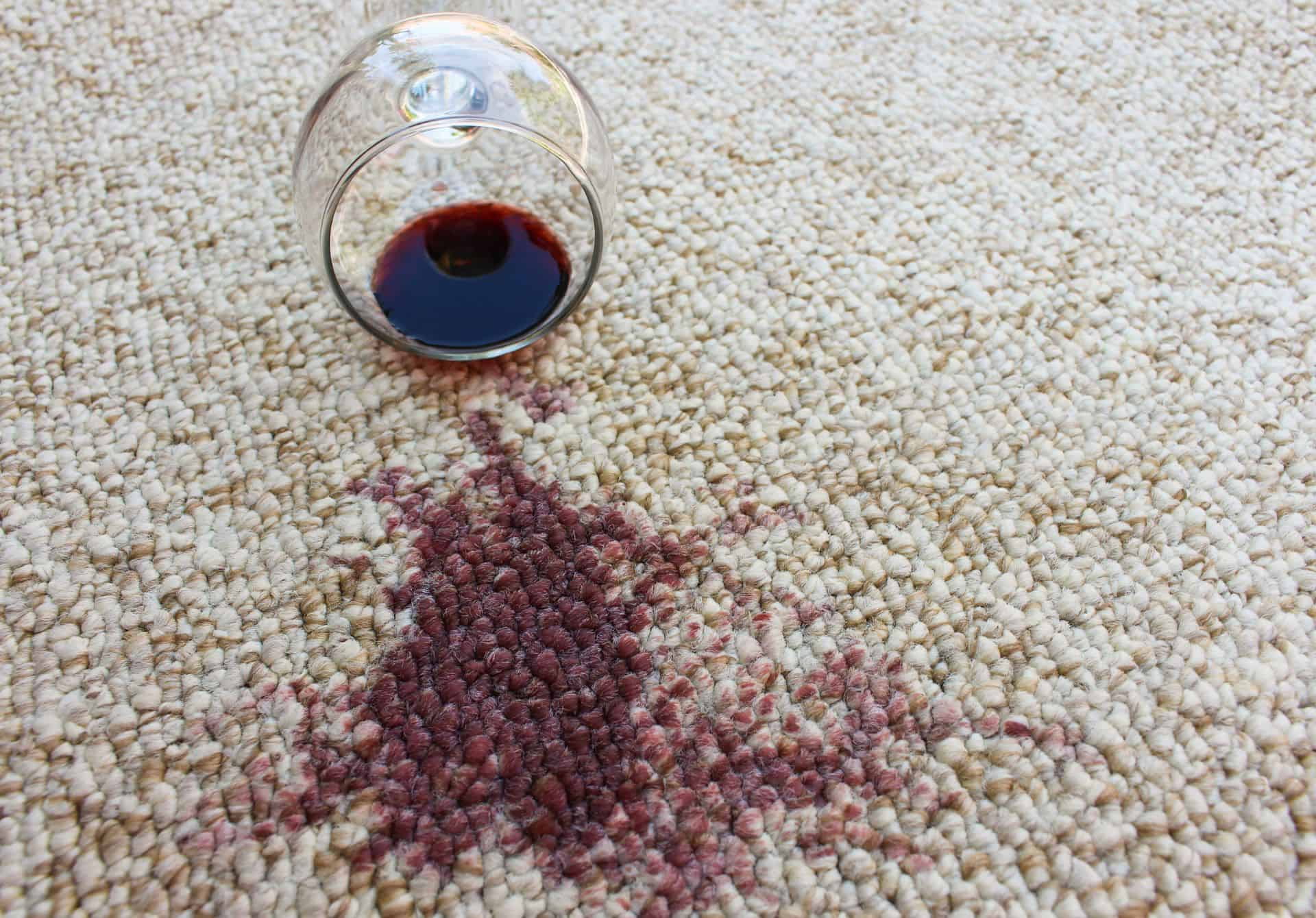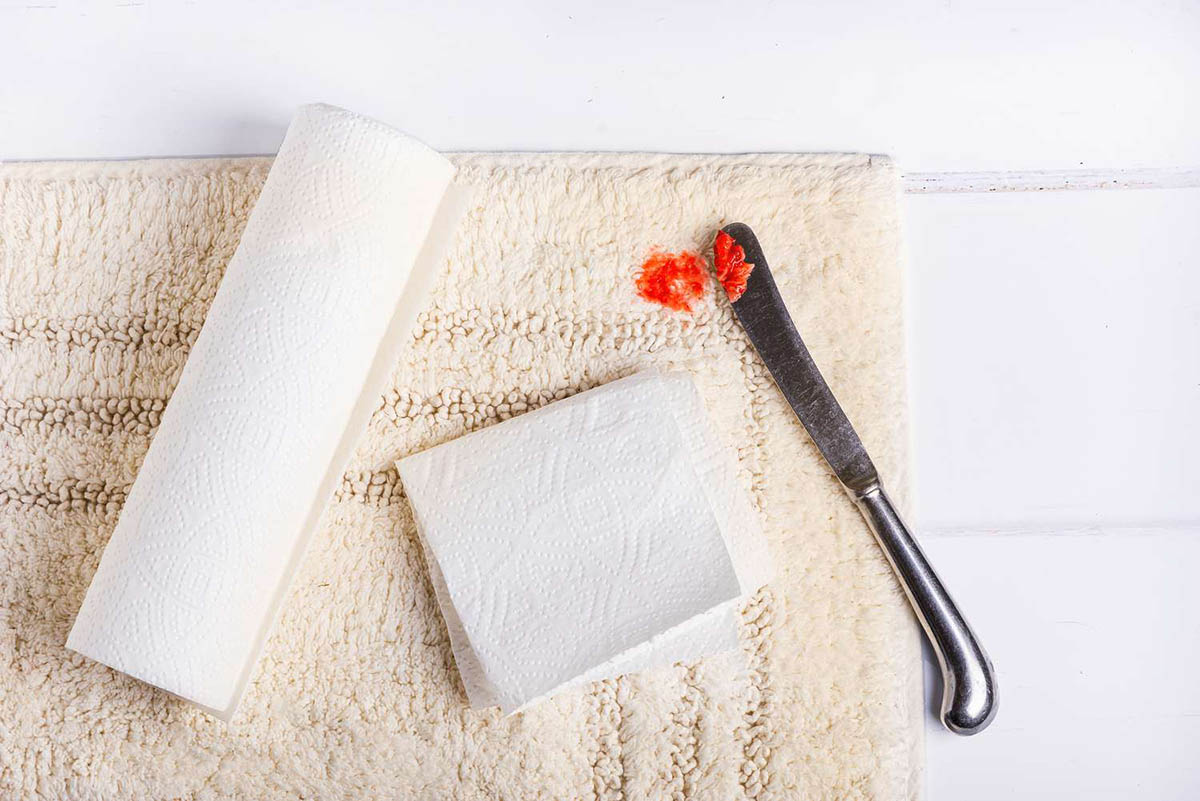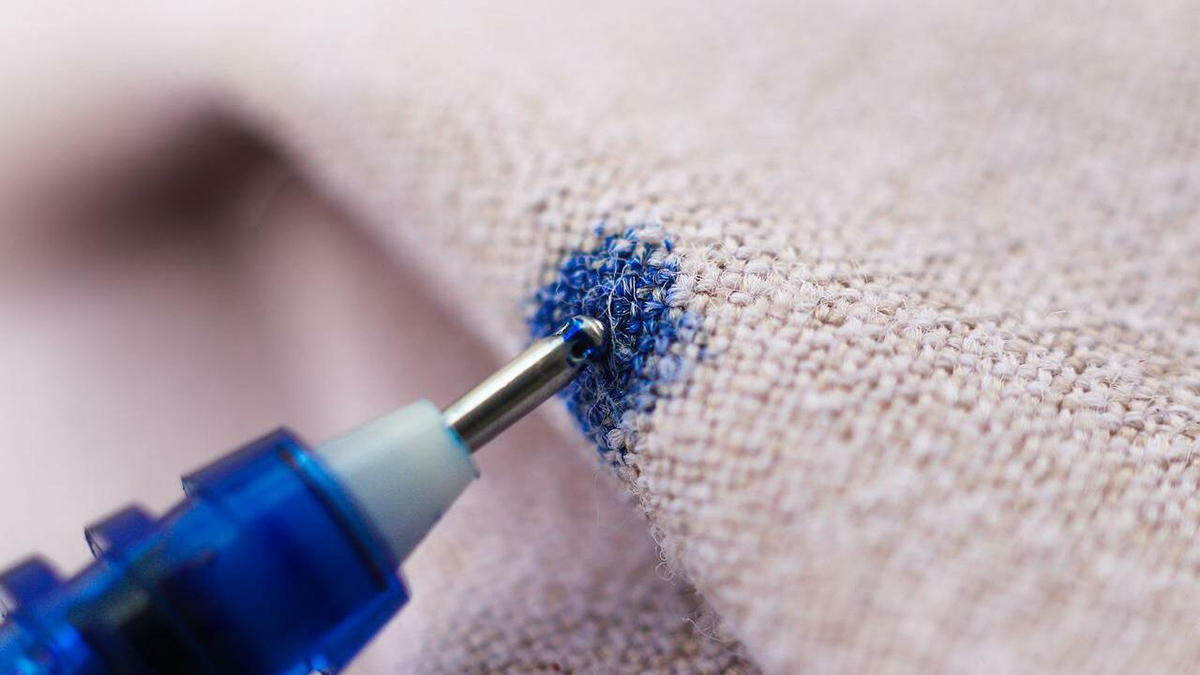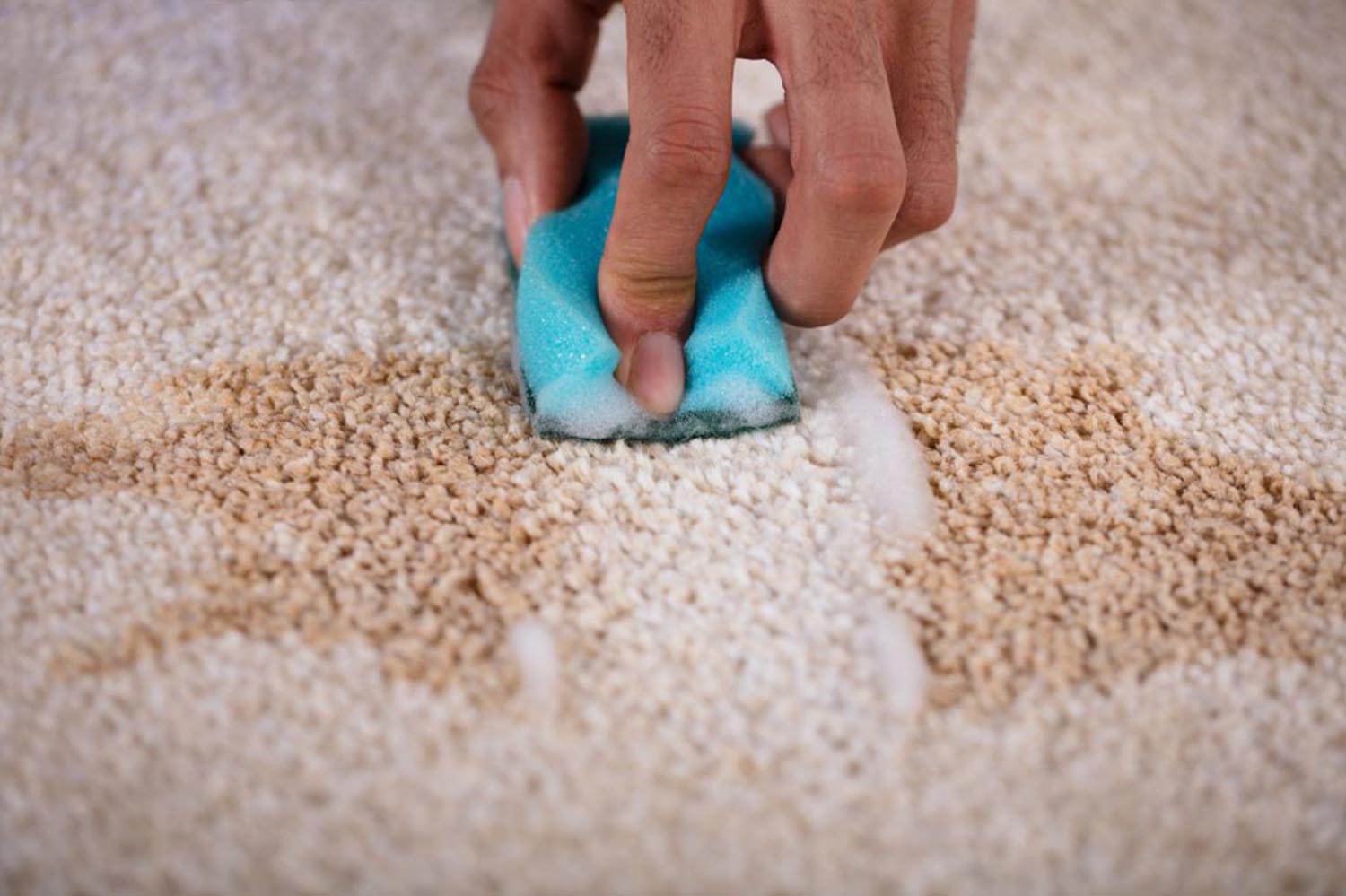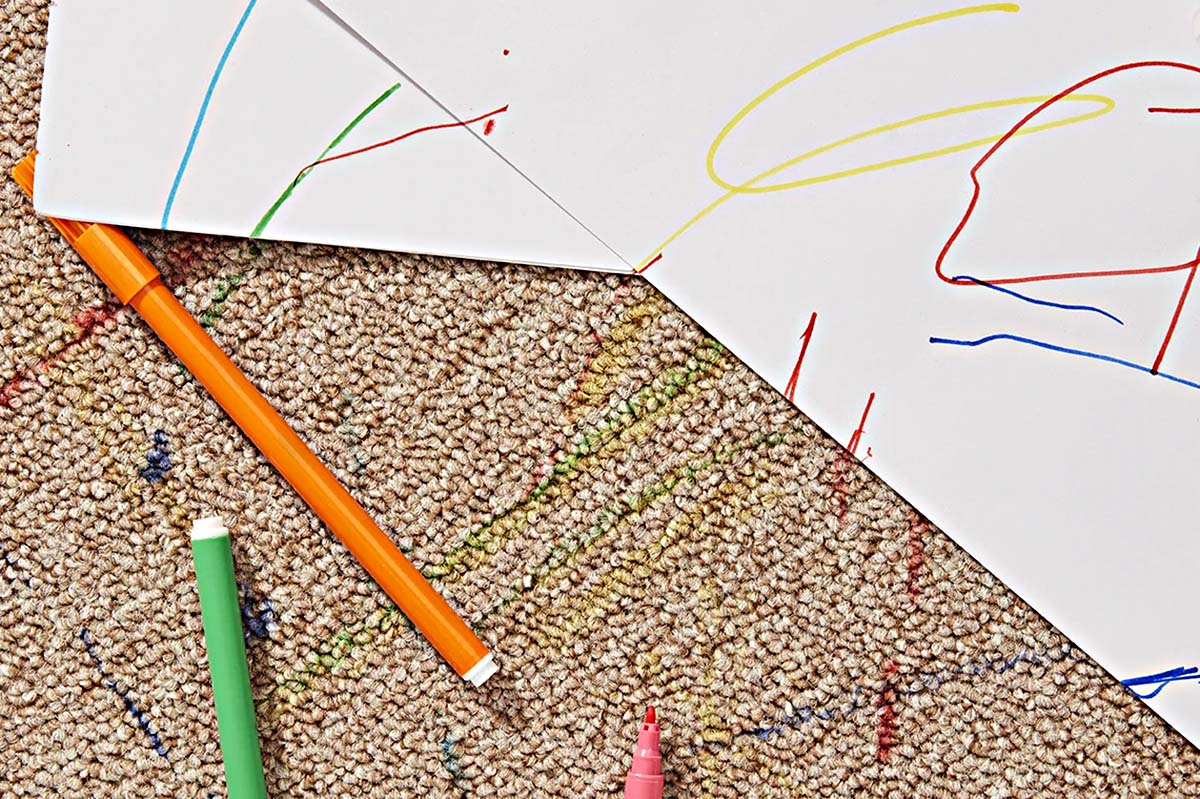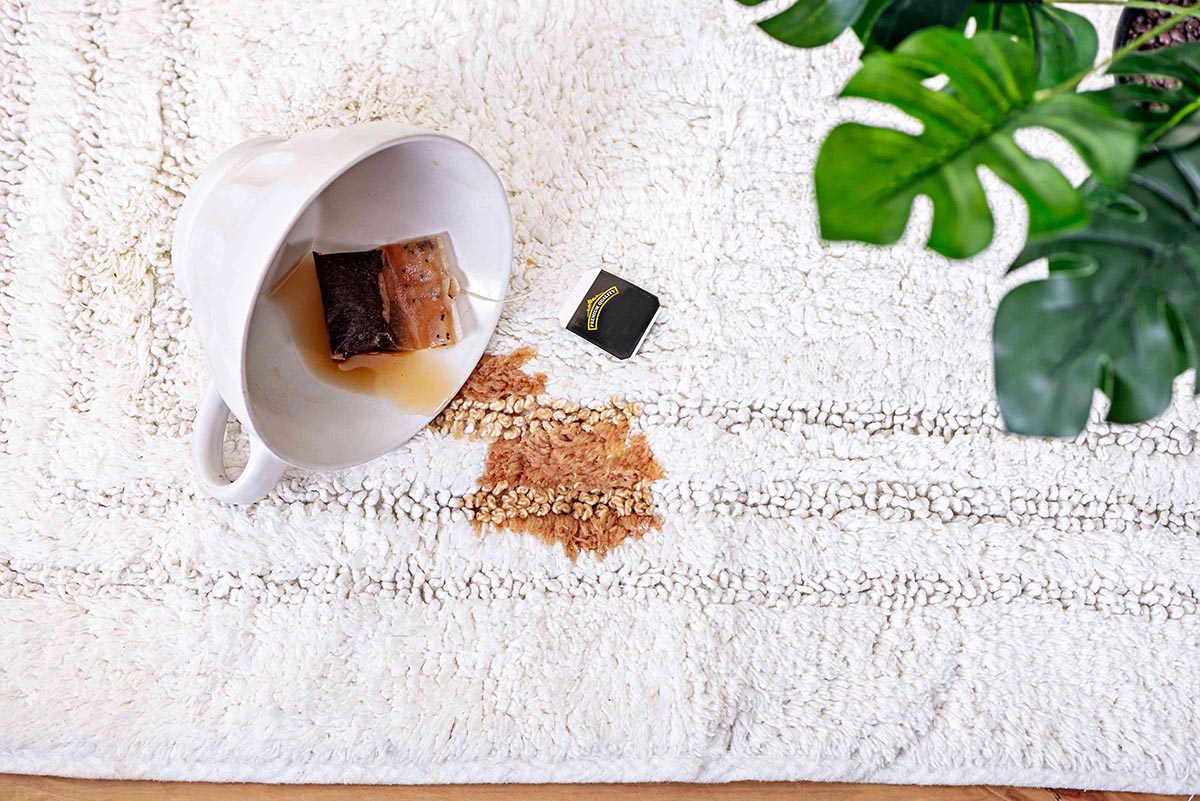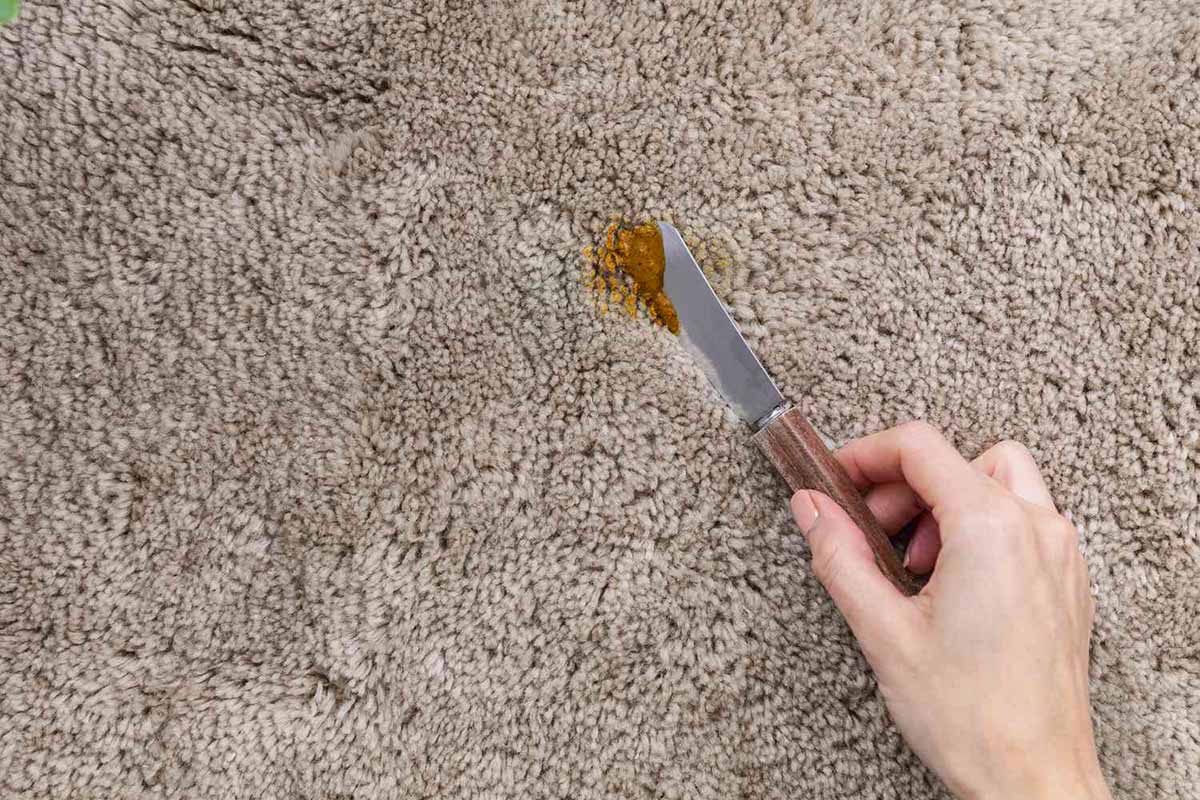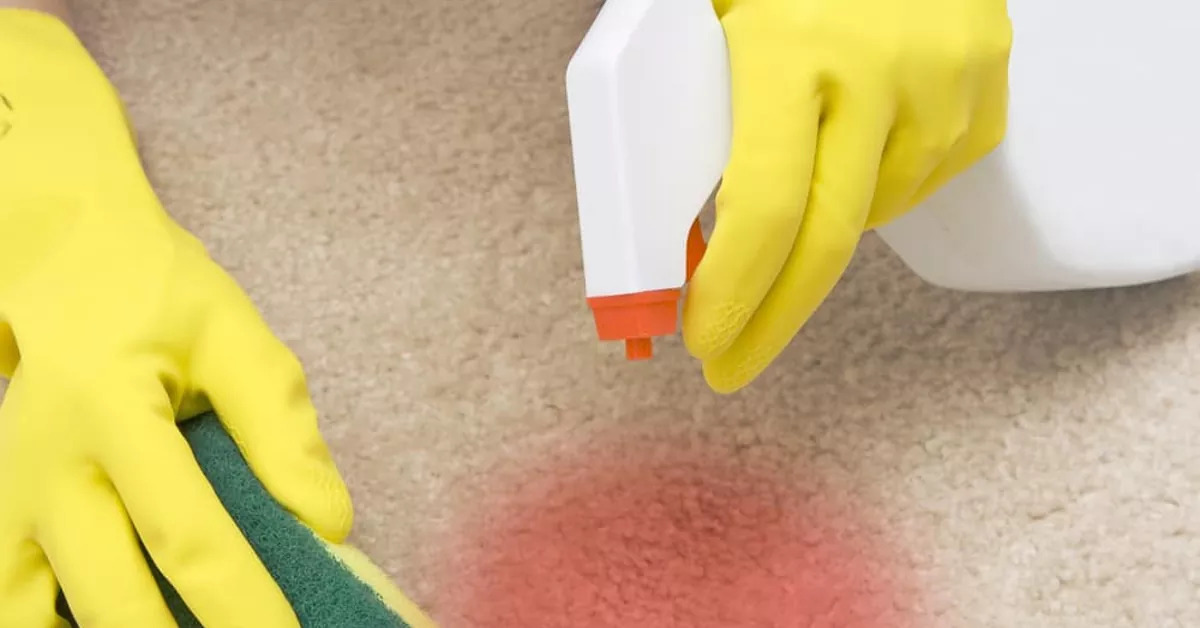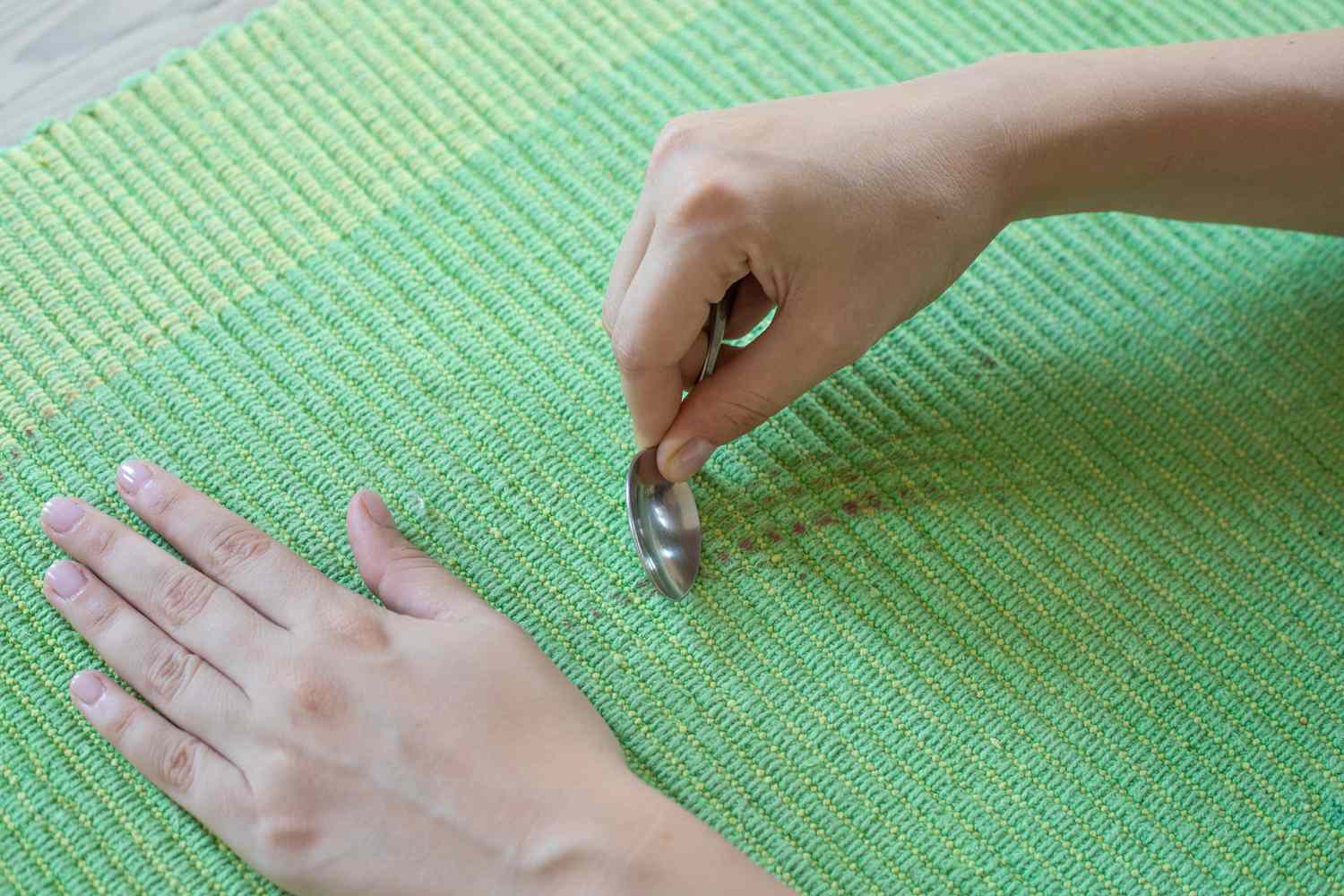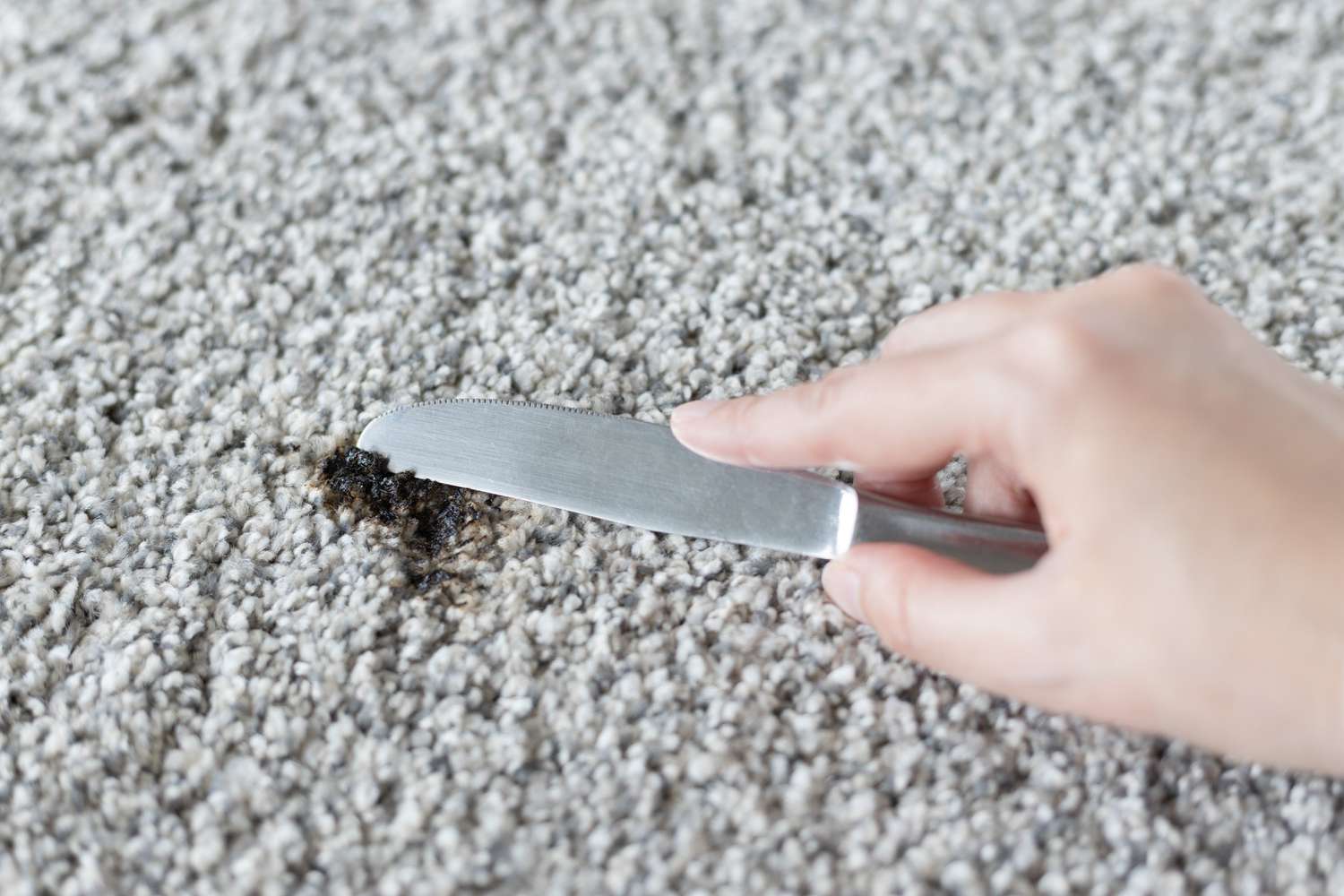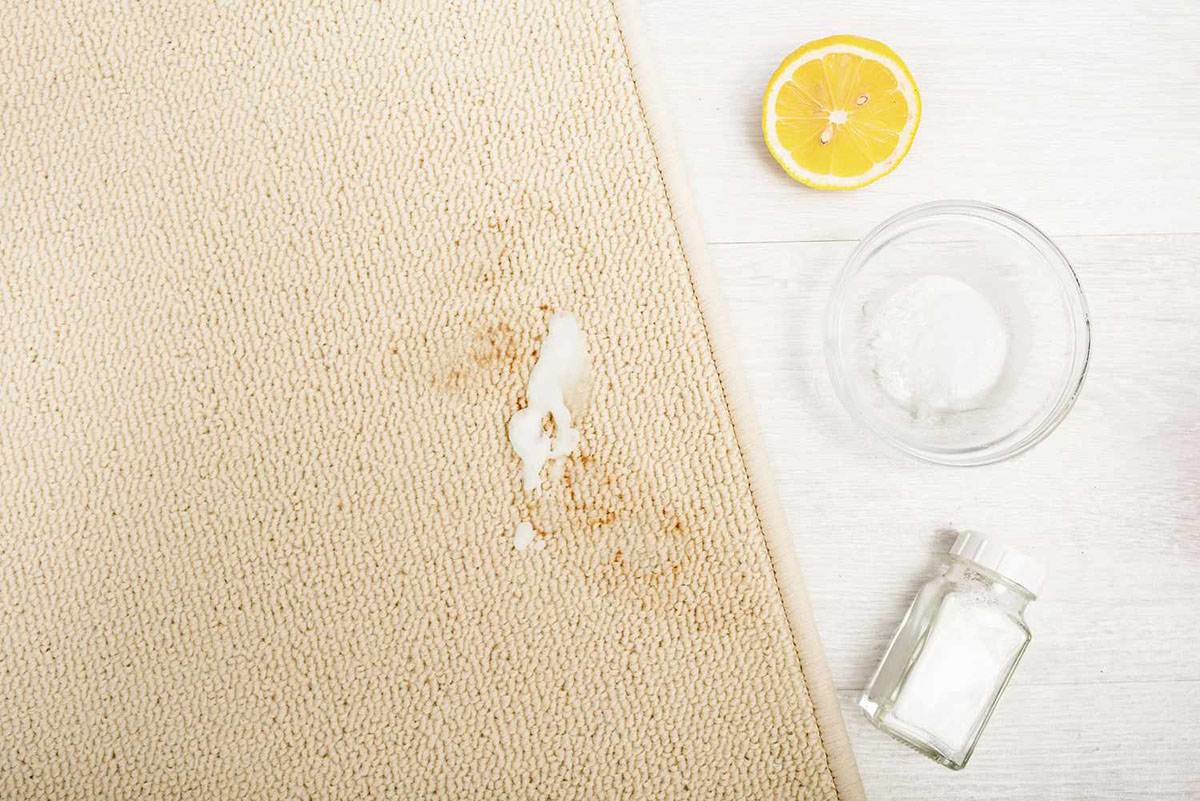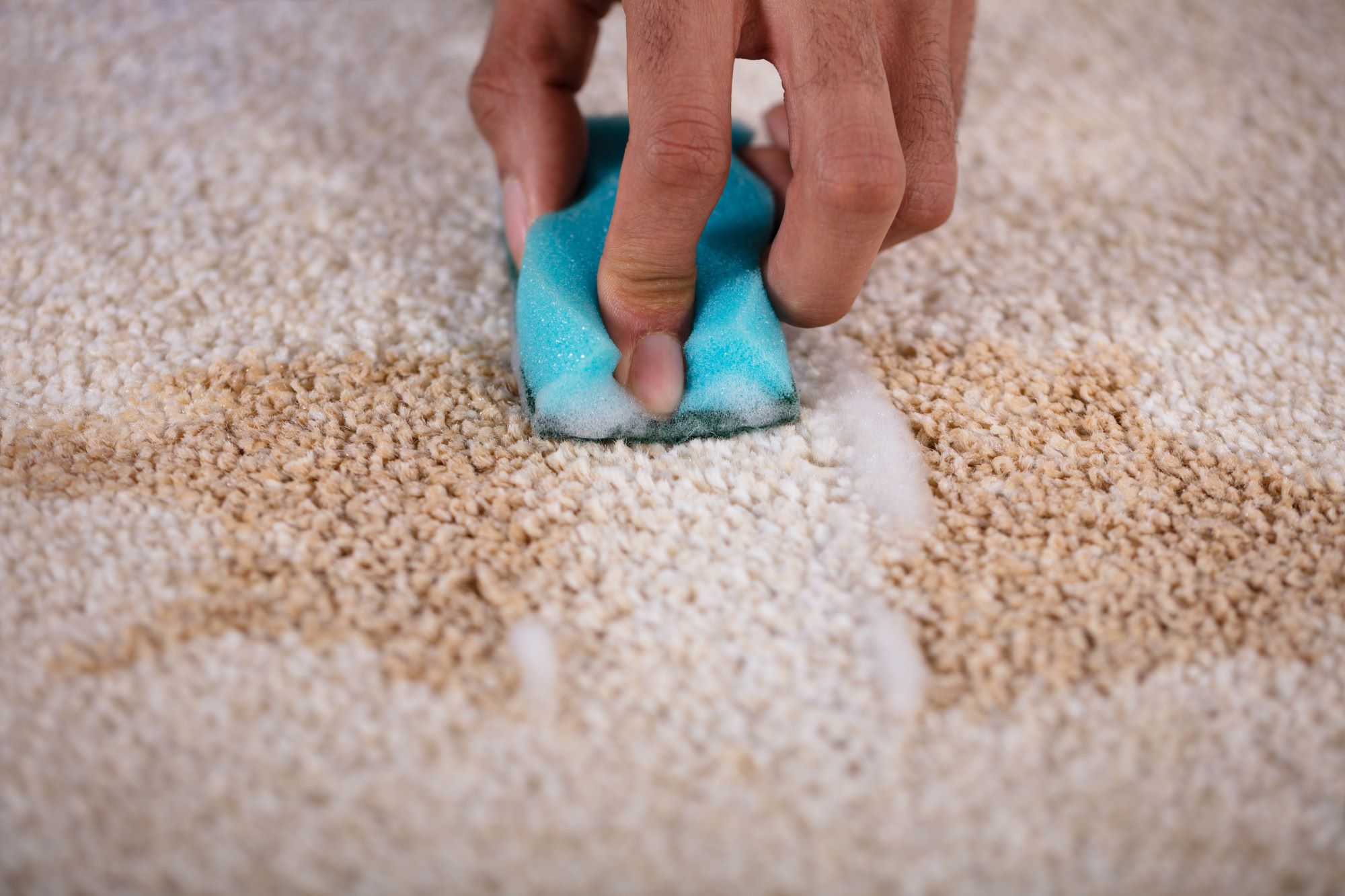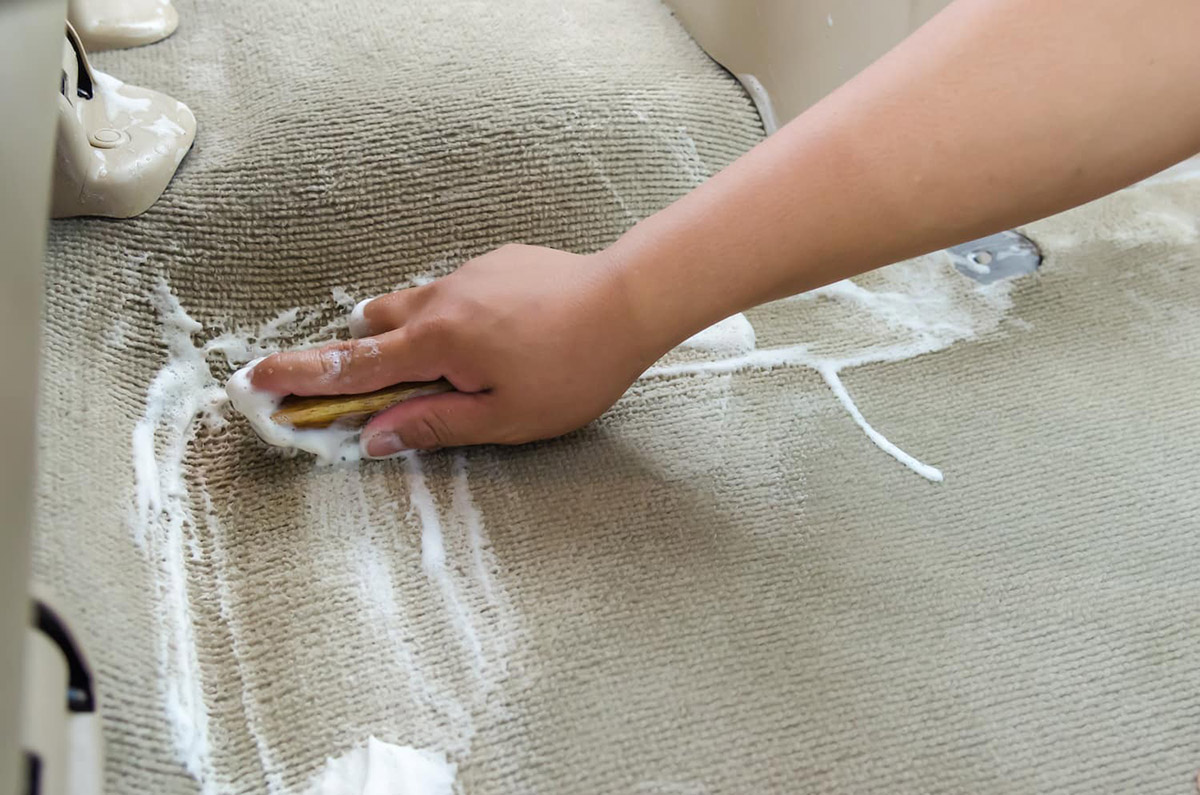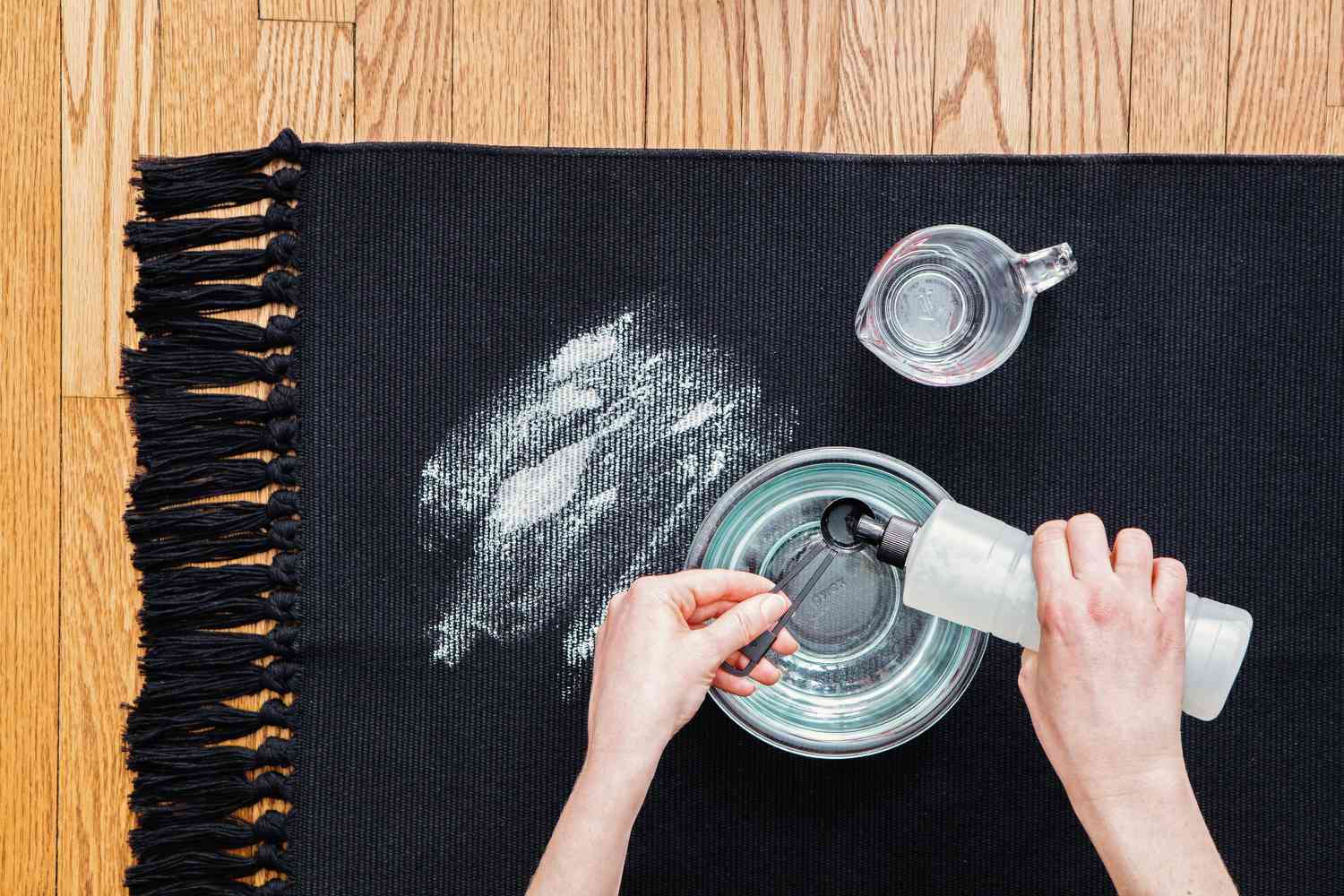

Articles
How To Remove Salt Stains From Carpet
Modified: January 9, 2024
Learn effective techniques to remove salt stains from your carpet with our informative articles. Say goodbye to unsightly stains and keep your carpet looking fresh and clean.
(Many of the links in this article redirect to a specific reviewed product. Your purchase of these products through affiliate links helps to generate commission for Storables.com, at no extra cost. Learn more)
Introduction
Salt stains on carpets can be a real headache, especially during the winter months when salt is commonly used to de-ice roads and sidewalks. The white residue left behind from salt can make your carpets look dirty and dull. However, with the right techniques and a little bit of effort, you can easily remove salt stains and restore the beauty of your carpets.
In this article, we will guide you through various methods to effectively remove salt stains from your carpets. From simple homemade solutions to commercial carpet cleaners, we’ve got you covered. So, let’s dive in and find out how to tackle those pesky salt stains.
Key Takeaways:
- Say goodbye to salt stains on carpets by using vinegar, club soda, dish soap, hydrogen peroxide, or commercial carpet cleaners. Act quickly, avoid rubbing, and maintain your carpets for effective stain removal.
- Prepare adequately, test for colorfastness, and follow specific instructions for each method. Seek professional cleaning if needed, and enjoy fresh, clean carpets once again.
Read more: How To Remove Salt From Car Carpet
Understanding Salt Stains on Carpets
Before we delve into the cleaning methods, it’s important to understand why salt stains can occur on carpets and the potential damage they can cause. Salt stains typically form when salt, used for de-icing, is tracked into your home and onto your carpets.
The main culprit behind salt stains is sodium chloride, which is commonly used as a de-icing agent. When this salt comes into contact with your carpets, it dissolves in melted snow or ice and forms a white or yellowish residue as it dries. These stains not only make your carpets look unsightly, but they can also leave behind a gritty texture.
Moreover, if left untreated, salt stains can lead to long-term damage to your carpets. The salt residue acts as an abrasive, gradually wearing down the carpet fibers and causing them to become brittle. This can result in permanent discoloration and significantly reduce the lifespan of your carpets.
Now that you have a better understanding of the problem, let’s move on to the next section where we’ll discuss how to prepare for the cleaning process.
Preparing for the Cleaning Process
Before you start removing salt stains from your carpets, it’s essential to prepare adequately. Here are a few steps to follow:
- Remove any loose salt particles: Begin by vacuuming the affected areas to remove any loose salt particles. Use a vacuum cleaner with a brush attachment to ensure thorough cleaning.
- Blot the stains: If the salt stains are still fresh and wet, use a clean cloth or paper towel to blot the excess moisture. Be careful not to rub the stain, as this can push the salt deeper into the carpet fibers.
- Test for colorfastness: Before applying any cleaning solution to your carpets, it’s crucial to test for colorfastness. Choose an inconspicuous area of the carpet, dampen a clean cloth with the cleaning solution you intend to use, and gently dab it on the spot. If the color of the carpet transfers to the cloth, refrain from using that particular solution.
- Gather the necessary supplies: Depending on the method you choose, gather the required supplies. This could include vinegar, club soda, dish soap, hydrogen peroxide, a carpet cleaner, clean cloths or paper towels, a spray bottle, and a soft brush.
- Read the manufacturer’s instructions: If you’re using a commercial carpet cleaner, make sure to read and follow the manufacturer’s instructions carefully. Different products may have specific guidelines for dilution ratios and application methods.
- Protect your hands: Some cleaning solutions can be harsh on the skin, so it’s advisable to wear gloves while handling them. This will protect your hands from any potential irritation or allergic reactions.
By taking these preparatory steps, you ensure that the cleaning process goes smoothly and effectively. Now that you’re ready, let’s explore the different methods you can use to remove salt stains from your carpets.
Method 1: Vinegar Solution
Vinegar is a versatile and effective cleaning agent that can be used to remove salt stains from carpets. Its acidic properties help break down the salt residue and lift it from the fibers. Here’s how you can create and use a vinegar solution:
- Mix a solution: In a spray bottle, combine equal parts white vinegar and water. Shake the bottle gently to ensure the ingredients are well mixed.
- Spray the solution: Spray the vinegar solution directly onto the salt-stained areas of your carpet. Be sure to saturate the stains but avoid soaking the carpet excessively.
- Allow it to sit: Let the vinegar solution sit on the stains for a few minutes. This gives it time to penetrate and loosen the salt residue.
- Blot the stains: After the solution has had time to work, use a clean cloth or paper towel to blot the stains gently. Start from the outer edges of the stain and work your way inward. Avoid rubbing, as this can spread the stain.
- Rinse with clean water: Dampen a clean cloth with plain water and blot the treated area to rinse out the vinegar solution. Make sure you remove any remaining vinegar residue.
- Dry the carpet: Finally, use a dry cloth or paper towels to absorb any excess moisture. Allow the carpet to air dry completely.
Remember, vinegar has a strong smell that may linger temporarily. If the odor persists, you can sprinkle baking soda over the freshly cleaned area to help neutralize the scent. Vacuum the carpet once the baking soda has had time to absorb the odor.
Vinegar is an excellent natural cleaner that can be used in various cleaning tasks around the house. However, it’s essential to test for colorfastness in an inconspicuous area before using the vinegar solution on your entire carpet.
Now that you’ve learned how to remove salt stains using vinegar, let’s move on to the next method: club soda.
Method 2: Club Soda
Club soda is another effective and readily available option for removing salt stains from carpets. Its carbonated properties help break down the salt residue and lift it away from the fibers. Follow these steps to use club soda to remove salt stains:
- Blot the stains: Start by blotting the salt-stained areas with a clean cloth or paper towel to remove any loose salt particles. Be gentle and avoid rubbing the stain, as this can spread it further.
- Pour club soda: Pour a small amount of club soda directly onto the salt stains. It’s best to start with a small amount and gradually increase if necessary.
- Let it fizz: Allow the club soda to fizz and work its magic on the stains. This can help lift the salt residue from the carpet fibers.
- Blot the stains: After the club soda has had time to react with the salt stains, use a clean cloth or paper towel to blot the area gently. Start from the outer edges of the stain and work your way inward.
- Rinse with water: Dampen a clean cloth with plain water and blot the treated area to rinse out any remaining club soda or salt residue.
- Dry the carpet: Use a dry cloth or paper towels to absorb any excess moisture from the carpet. Allow the carpet to air dry completely.
Club soda is an effective option for removing salt stains, thanks to its carbonation. However, it’s important to note that club soda may not be suitable for all carpet types. It is recommended to test for colorfastness in an inconspicuous area before using club soda on your entire carpet.
Now that you’ve learned how to remove salt stains using club soda, let’s explore another method: dish soap and warm water.
Mix equal parts white vinegar and water, then dab the solution onto the salt stain with a cloth. Blot with a clean cloth and repeat until the stain is gone.
Read more: How To Remove Makeup Stains From Carpet
Method 3: Dish Soap and Warm Water
A simple and effective method for removing salt stains from carpets is using a mixture of dish soap and warm water. Dish soap helps break down the salt residue while warm water helps dissolve it and lift it away from the carpet fibers. Here’s how to use this method:
- Dilute the dish soap: In a bucket, mix a few drops of mild dish soap with warm water. Avoid using excessive amounts of soap, as this can leave behind a residue.
- Apply the solution: Dip a clean cloth or sponge into the soapy mixture and gently blot the salt stains on your carpet. Make sure to saturate the stains without soaking the carpet.
- Let it sit: Allow the solution to sit on the stains for a few minutes. This gives the dish soap time to break down the salt residue.
- Blot the stains: After the solution has had time to work, use a clean cloth or paper towel to blot the stains gently. Start from the outer edges of the stain and work your way inward. Avoid rubbing, as this can spread the stain.
- Rinse with clean water: Dampen a clean cloth with plain water and blot the treated area to rinse away the soap residue and any remaining salt residue.
- Dry the carpet: Use a dry cloth or paper towels to absorb any excess moisture from the carpet. Allow the carpet to air dry completely.
Using a mild dish soap is important to avoid leaving behind a soapy residue that can attract dirt. Additionally, always test the dish soap mixture in an inconspicuous area before applying it to the entire carpet to ensure it doesn’t cause any discoloration.
Now that you’ve learned how to remove salt stains using dish soap and warm water, let’s move on to the next method: hydrogen peroxide solution.
Method 4: Hydrogen Peroxide Solution
Hydrogen peroxide is a powerful stain remover that can effectively tackle stubborn salt stains on carpets. It not only helps break down the salt residue but also has bleaching properties that can lighten any discoloration caused by the stains. Here’s how to use a hydrogen peroxide solution to remove salt stains:
- Create the solution: In a spray bottle, mix equal parts hydrogen peroxide and water to create a solution. Make sure to use a 3% hydrogen peroxide solution, which is commonly available at drugstores or supermarkets.
- Spray the solution: Spray the hydrogen peroxide solution directly onto the salt-stained areas of your carpet. Be generous with the application, ensuring that the stains are saturated with the solution.
- Allow it to sit: Let the solution sit on the stains for about 10-15 minutes, allowing it to penetrate and break down the salt residue.
- Blot the stains: After the solution has had time to work, use a clean cloth or paper towel to blot the stains gently. Start from the outer edges of the stain and work your way inward. Avoid rubbing, as this can spread the stain.
- Rinse with clean water: Dampen a clean cloth with plain water and blot the treated area to rinse out the hydrogen peroxide solution and any remaining salt residue.
- Dry the carpet: Use a dry cloth or paper towels to absorb any excess moisture from the carpet. Allow the carpet to air dry completely.
Hydrogen peroxide is a potent substance, so it’s important to use caution when applying it to your carpets. Test the solution in an inconspicuous area first to ensure that it does not cause any discoloration. Additionally, it’s advisable to wear gloves and work in a well-ventilated area when using hydrogen peroxide.
Now that you’ve learned how to remove salt stains using a hydrogen peroxide solution, let’s explore our final method: commercial carpet cleaners.
Method 5: Commercial Carpet Cleaner
If the salt stains on your carpets are stubborn or extensive, using a commercial carpet cleaner can be an effective solution. These cleaners are specifically formulated to remove tough stains and dirt from carpets. Follow these steps when using a commercial carpet cleaner:
- Choose a suitable cleaner: Visit a local store or browse online to find a commercial carpet cleaner that is designed to remove salt stains. Look for a cleaner that is safe to use on your specific type of carpet.
- Read the instructions: Carefully read and follow the instructions provided by the manufacturer. Each product may have specific guidelines regarding dilution ratios, application methods, and contact time.
- Prepare the solution: Mix the commercial carpet cleaner with the recommended amount of water, following the instructions on the product packaging. Make sure to mix the solution in a clean bucket or spray bottle, as directed.
- Apply the solution: Apply the commercial carpet cleaner solution to the salt-stained areas of your carpet, following the manufacturer’s instructions. Use a clean cloth or sponge to work the solution into the stained areas.
- Let it sit: Allow the solution to sit on the stains for the specified amount of time. This allows the cleaner to penetrate the salt residue and break it down.
- Blot or rinse: Depending on the instructions provided, either blot the treated areas with a clean cloth or rinse them with plain water. This will help remove the solution and any loosened salt residue.
- Dry the carpet: Use a dry cloth or paper towels to absorb any excess moisture from the carpet. Allow the carpet to air dry completely.
Commercial carpet cleaners are generally safe to use but always take precautions and read the labels for any specific instructions or warnings. It is also recommended to test the cleaner on a small, inconspicuous area of the carpet before applying it to larger, visible areas.
Now that you’ve explored various methods to remove salt stains from carpets, it’s important to consider some additional tips and precautions to ensure effective results.
Additional Tips and Precautions
When dealing with salt stains on carpets, here are some additional tips and precautions to keep in mind for successful stain removal:
- Act quickly: The sooner you tackle salt stains, the easier they are to remove. Try to address the stains as soon as you notice them to prevent them from setting into the carpet fibers.
- Avoid rubbing: When blotting or cleaning the stains, always use a gentle blotting motion instead of rubbing. Rubbing can push the salt deeper into the carpet or spread the stain, making it harder to remove.
- Work from the outer edges: When blotting or cleaning the stains, start from the outer edges and work your way inward. This helps prevent the stain from spreading further.
- Blot, don’t scrub: Whether you’re using a homemade solution or a commercial carpet cleaner, avoid scrubbing the carpet vigorously. This can damage the carpet fibers and make the stain more difficult to remove.
- Test for colorfastness: Before applying any cleaning solution to your carpet, test it in an inconspicuous area to ensure it does not cause any discoloration or damage. This is especially important for carpets that are sensitive to certain cleaning agents.
- Dry thoroughly: After cleaning the salt stains, make sure to dry the carpet thoroughly. Excess moisture can lead to mold or mildew growth. Use a dry cloth or towels to absorb any remaining moisture and allow the carpet to air dry completely.
- Regular maintenance: To prevent salt stains in the future, it’s helpful to maintain a routine of vacuuming your carpets regularly. This removes any loose salt particles and prevents them from accumulating and causing stains.
- Professional cleaning: If salt stains persist or if you have concerns about damaging your carpet, it may be wise to seek professional carpet cleaning services. Professionals have the expertise and specialized equipment to effectively remove salt stains and rejuvenate your carpets.
By following these tips and taking proper precautions, you can effectively remove salt stains from your carpets and keep them looking fresh and clean. Remember, prevention is key, so always try to minimize the tracking of salt or use protective mats during winter months.
Now that you have a comprehensive understanding of how to tackle salt stains on carpets, you can confidently restore the beauty and cleanliness of your flooring. Say goodbye to those pesky salt stains and enjoy fresh, vibrant carpets once again!
Do you need any further assistance?
Read more: How To Remove Water Stains From Carpet
Conclusion
Salt stains on carpets can be a common and frustrating problem, especially during the winter months. However, with the right techniques and a little bit of effort, you can easily remove salt stains and restore the beauty of your carpets.
In this article, we explored various methods to effectively remove salt stains from carpets. From simple homemade solutions like vinegar and club soda to using dish soap and warm water, hydrogen peroxide solution, and commercial carpet cleaners, you have a range of options to choose from.
Remember to always prepare adequately before the cleaning process, removing loose salt particles and testing for colorfastness. Blotting the stains and allowing the chosen solution to work its magic before rinsing and drying the carpet thoroughly are crucial steps in achieving successful stain removal.
Additionally, we provided some additional tips and precautions to guide you during the process. Acting quickly, avoiding rubbing, working from the outer edges, and regularly maintaining your carpets are key practices to keep in mind. If needed, seeking professional carpet cleaning services can be a wise option.
By following these methods and tips, you can effectively remove salt stains from your carpets and restore their pristine condition. Say goodbye to those unsightly stains and enjoy fresh, clean carpets once again.
We hope this article has been insightful and helpful in your journey to remove salt stains from your carpets. Now it’s time to put these techniques into action and enjoy the results!
If you have any further questions or need additional assistance, feel free to reach out. Happy cleaning!
Frequently Asked Questions about How To Remove Salt Stains From Carpet
Was this page helpful?
At Storables.com, we guarantee accurate and reliable information. Our content, validated by Expert Board Contributors, is crafted following stringent Editorial Policies. We're committed to providing you with well-researched, expert-backed insights for all your informational needs.
